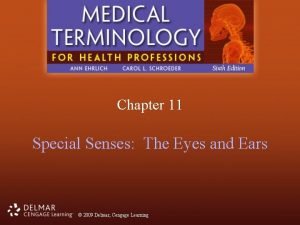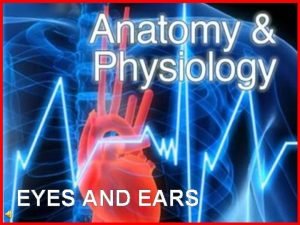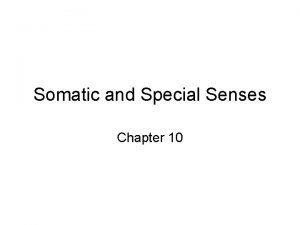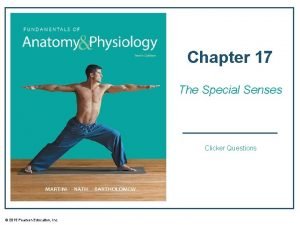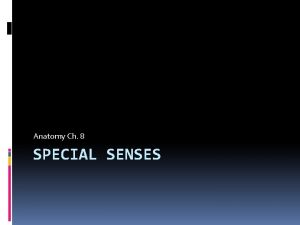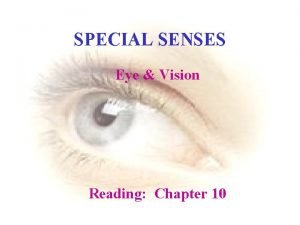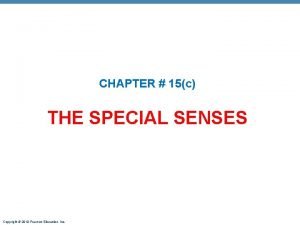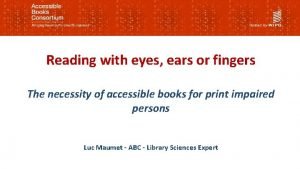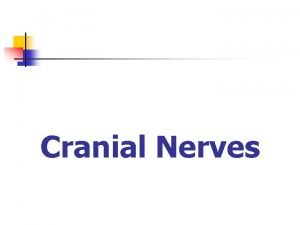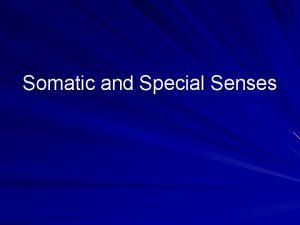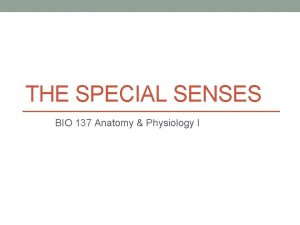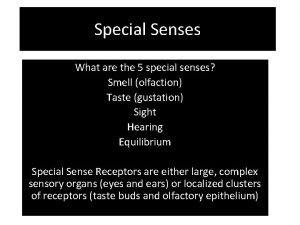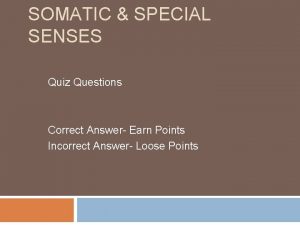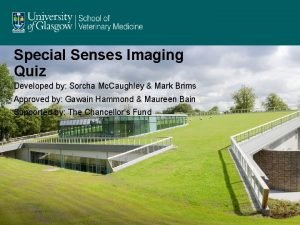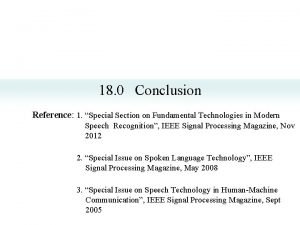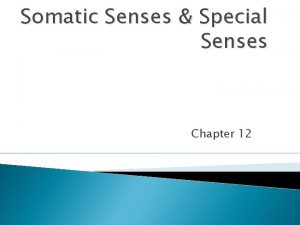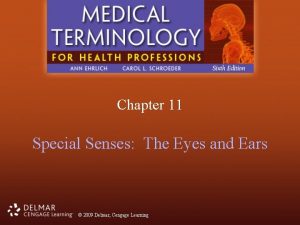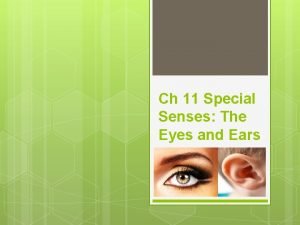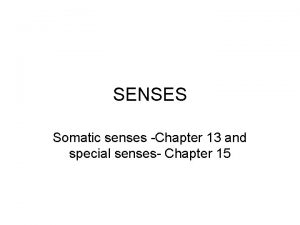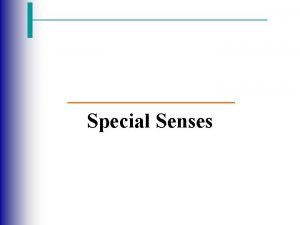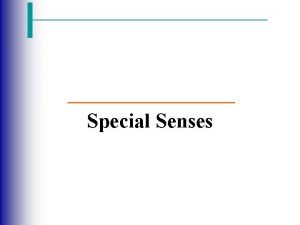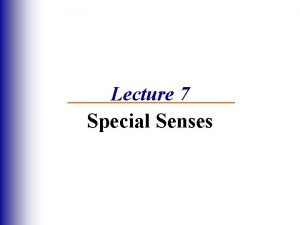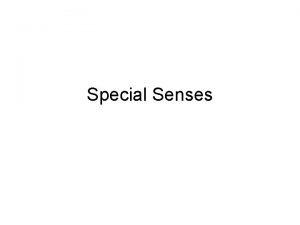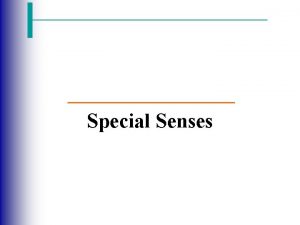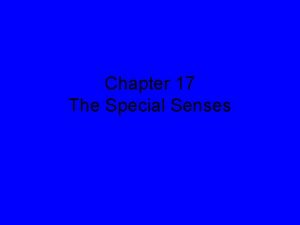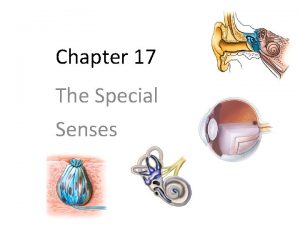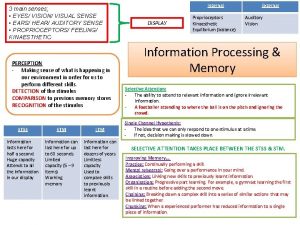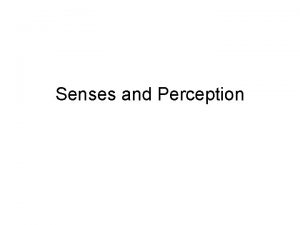Special Senses The Eyes and Ears Chapter 11


























- Slides: 26

Special Senses: The Eyes and Ears Chapter 11 © 2015, Cengage Learning. All Rights Reserved.

Overview of Structures, Combining Forms, and Functions of the Eyes and Ears © 2015, Cengage Learning. All Rights Reserved.

Eyes (and Vison) • Primary Function – Receptor organs for the sense of sight • Related Word Parts (Combining Forms) – opt/i, opt/o, optic/o – ophthalm/o © 2015, Cengage Learning. All Rights Reserved.

Structures of the Eyes • Adnexa: structures outside the eyeball – Orbit, eye muscles, eyelids, eyelashes, conjunctiva, lacrimal apparatus • Eyeball: also known as the globe (continues) © 2015, Cengage Learning. All Rights Reserved.

© Cengage Learning Structures of the Eyes (continues) © 2015, Cengage Learning. All Rights Reserved.

© Cengage Learning Structures of the Eyes (continues) © 2015, Cengage Learning. All Rights Reserved.

© Cengage Learning Structures of the Eyes (continues) © 2015, Cengage Learning. All Rights Reserved.

© Cengage Learning Structures of the Eyes © 2015, Cengage Learning. All Rights Reserved.

Lacrimal Apparatus • Primary Function – Produces, stores, and removes tears • Related Word Parts (Combining Forms) – dacryocyst/o – lacrim/o © 2015, Cengage Learning. All Rights Reserved.

Iris • Primary Function – Controls the amount of light entering the eye • Related Word Parts (Combining Forms) – ir/i, ir/o – irid/o – irit/o © 2015, Cengage Learning. All Rights Reserved.

Lens • Primary Function – Focuses rays of light on the retina • Related Word Parts (Combining Forms) – phac/o – phak/o © 2015, Cengage Learning. All Rights Reserved.

Retina • Primary Functions – Converts light images into electrical impulses and transmits them to the brain • Related Word Parts (Combining Forms) – retin/o © 2015, Cengage Learning. All Rights Reserved.

Ears (Hearing and Sound) • Primary Function – Receptor organs for the sense of hearing – Help to maintain balance • Related Word Parts (Combining Forms) – acous/o, acoust/o – audi/o, audit/o – ot/o © 2015, Cengage Learning. All Rights Reserved.

© Cengage Learning Structures of the Ears © 2015, Cengage Learning. All Rights Reserved.

Outer Ear • Primary Function – Transmits sound waves to the middle ear • Related Word Parts (Combining Forms) – pinn/i © 2015, Cengage Learning. All Rights Reserved.

Middle Ear • Primary Function – Transmits sound waves to the inner ear • Related Word Parts (Combining Forms) – myring/o – tympan/o © 2015, Cengage Learning. All Rights Reserved.

Inner Ear • Primary Function – Receives sound vibrations and transmits them to the brain • Related Word Parts (Combining Forms) – labyrinth/o © 2015, Cengage Learning. All Rights Reserved.

Key Word Parts and Definitions • blephar/o – eyelid • -cusis – hearing • irid/o – iris, colored part of eye • kerat/o – horny, hard, cornea (continues) © 2015, Cengage Learning. All Rights Reserved.

Key Word Parts and Definitions • myring/o – tympanic membrane, eardrum • ophthalm/o – eye, vision • -opia – vision condition • opt/o – eye, vision (continues) © 2015, Cengage Learning. All Rights Reserved.

Key Word Parts and Definitions • ot/o – ear, hearing • phak/o – lens of eye • presby/o – old age • retin/o – retina, net (continues) © 2015, Cengage Learning. All Rights Reserved.

Key Word Parts and Definitions • scler/o – sclera, white of eye, hard • trop/o – turn, change • tympan/o – tympanic membrane, eardrum © 2015, Cengage Learning. All Rights Reserved.

Questions © 2015, Cengage Learning. All Rights Reserved.

Question The smallest bone in the body is the stapes, or stirrup bone, of the middle ear. True or False? © 2015, Cengage Learning. All Rights Reserved.

Question A ringing, buzzing, or roaring sound in one or both ears is called: a. tinnitus b. labyrinthitis c. tintinitus © 2015, Cengage Learning. All Rights Reserved.

Question Men are how many times more likely to be color-blind than women? a. 2 b. 10 c. 5 © 2015, Cengage Learning. All Rights Reserved.

Question If not treated promptly, open-angle glaucoma can cause blindness in as little as 2 days. True or False? © 2015, Cengage Learning. All Rights Reserved.
 Medical terminology chapter 11 learning exercises answers
Medical terminology chapter 11 learning exercises answers Special senses the eyes and ears
Special senses the eyes and ears What is the difference between somatic and special senses
What is the difference between somatic and special senses General senses vs special senses
General senses vs special senses Chapter 10 somatic and special senses
Chapter 10 somatic and special senses Anatomy and physiology chapter 8 special senses
Anatomy and physiology chapter 8 special senses The general and special senses chapter 9
The general and special senses chapter 9 Dr lisch
Dr lisch Chapter 17 special senses answer key
Chapter 17 special senses answer key Eye anatomy
Eye anatomy Chapter 10 special senses
Chapter 10 special senses Olfactory receptor cells
Olfactory receptor cells Chapter 15 special senses
Chapter 15 special senses Let him who has ears
Let him who has ears Ears that hear and eyes that see
Ears that hear and eyes that see Impaired eyes and ears
Impaired eyes and ears Cranial nerves mnemonic
Cranial nerves mnemonic The general
The general Somatic and special senses
Somatic and special senses Eyes are to spectacles as ears are to
Eyes are to spectacles as ears are to Open the blind eyes unlock the deaf ears
Open the blind eyes unlock the deaf ears Bio 137
Bio 137 5 special senses
5 special senses The cones of the retina are coursera quiz answers
The cones of the retina are coursera quiz answers Special senses quiz
Special senses quiz Extraocular muscles
Extraocular muscles Conclusion of special senses
Conclusion of special senses
